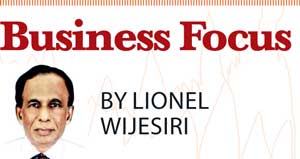11 Jul 2016 - {{hitsCtrl.values.hits}}

 To provide a customer relationship management (CRM) system that generates emotional commitment, companies may benefit from understanding the bases of customer loyalty toward different facets of the company or its product. Loyalty is multi-faceted and more than a repetition of a behaviour. Customers can exhibit loyalty to price, brand, company, other customers, a place or any number of other potential options.
To provide a customer relationship management (CRM) system that generates emotional commitment, companies may benefit from understanding the bases of customer loyalty toward different facets of the company or its product. Loyalty is multi-faceted and more than a repetition of a behaviour. Customers can exhibit loyalty to price, brand, company, other customers, a place or any number of other potential options.
Loyalty is a complex issue. The company’s goal may be to develop a one-to-one or customized approach to building loyalty. Frequently, companies attempt to recognize individuals, cultivate relationships through interactions that delight customers and develop feelings of trust within the community over time.
A one-to-one or customization strategy is tailored to the needs of the individual customer. When people walk into a store in a small town, the employees typically recognize loyal customers and call them by name. The promise of effective CRM systems is the ability for companies to acknowledge each customer - to mass personalize the offering.
Recognition implies a personal greeting that is based on the knowledge of the history of interactions. Using data about past purchases in conjunction with other segmentation variables (demographics, lifestyles, geography), the company may have a positive impact on attitudinal and behavioural commitment. In effect, the company is interacting as if each customer were a platinum choice.
Cultivation
The term ‘Cultivation’ is used to imply meaningful interactions between the company and the customer, similar to the courtship phase prior to marriage. The company attempts to satisfy customer expectations with each interaction and/or to provide reasons for customers to revisit the website, catalogue or store, again and again. When we converse with other people, we exchange information but when we talk with friends we avidly approach the interaction and are engaged in the joy of sharing feelings as well as ideas.
Cultivation within CRM systems involves the need to gather information over time and to continually reinforce the type of loyalty that is important to the customer. When it works well, CRM systems allow the company to create delightful interactions.
Development of the relationship with customers requires a clear image for the company and of its services or brands. When customers think of Apple, a clear picture of quality in mobiles, tabs and computers comes to mind. As customers identify with the brand and with the people who use that brand, loyalty and commitment are reinforced.
Factors that may lessen customer loyalty
If customers perceive that a company has a deficiency in any of the factors that positively contribute to customer loyalty, they may be less loyal. There are other factors that tend to lessen loyalty as well.
Competitive parity
When the offering of competitive companies is not differentiated, competitive parity exists.
If the customers perceive that brands are identical, perceived risk is low and there is a greater tendency for brand switching, the likelihood of loyalty toward the
product declines.
Variety-seeking behaviour
As we have already mentioned, customers who become bored and have a need for variety may engage in variety-seeking behaviour. People may simply want a new experience because of the declining benefits associated with repeat patronage or because they feel energized by the prospect of having a new experience. Companies can benefit from variety-seeking behaviour by satisfying the need and creating flanker brands, new flavours or other extensions of the
basic product.
Low involvement
A low level of personal relevance or perceived importance of a product or service to the individual is referred to simply as ‘low involvement’. Low involvement consumers often engage in ‘satisfying’ behaviour in which they make decisions that are ‘good enough’ and not necessarily optimal. If a person has a low interest in a product category, he or she is less likely to be loyal to a particular company or brand.
Customers who are low in involvement tend to be price sensitive, another factor which lessens loyalty toward the brand or company. Conversely, customers who are involved with the product tend to be less price sensitive. Deal proneness or receptivity to sales promotion incentives can also be used by companies if they can provide the low-
cost option.
If a brand or company has a low share of voice, that is, if a brand’s stores or the company’s relative promotional expenditures are low, customer loyalty may decline. Customers may not know how to interact with the company and may not get a clear picture of the community of customers or the
target base.
Profile your best customers
Getting to know your customer doesn’t necessarily mean investing in the biggest and most powerful data-gathering tools available. Building loyalty doesn’t mean asking customers for their phone number every time they buy something from you. Good relationships and trust are built over time, with give and take on both sides and not too much pressure.
Here’s a suggestion: Profile your best customers. Find out who they are and what they buy. Then map what we call ‘the customer corridor’. Identifying your customer corridor is a way to see your company from your customer’s perspective. It helps you see what is important to customers and what is not. Properly done, you will identify areas where changes in your service delivery can be made at both the transactional and strategic. Your customer corridor represents your customer’s end-to-end experience with you during the crop year. The cycle repeats itself each year, so once improvement areas are identified they can be implemented for the following season or perhaps sooner.
CRM software can help increase customer loyalty in many ways. It can track customer defection and retention levels. It can tell you how satisfied your
customers are.
But in the end, technology is not the answer. In fact, research shows that the prime driver of customer loyalty is the loyalty of the company’s employees. A local research organisation analysed the auto service business. It found that the highest rates of customer loyalty were in local garages, because they had the highest rate of employee retention. Although most customers felt that mechanics at the chain outlets possessed better training and equipment, they liked dealing with the local mechanic, the guy they knew. Customer loyalty hinges, as it always has, on committed teams of high-calibre employees – the kind that exceeds the customers’ expectations, rather than just grudgingly meeting them.
Realign your company and processes to fit the strategy
If CEOs expect their employees to do what’s needed to cultivate strong bonds with profitable customers, they must understand what loyalty is. Loyalty demands that profits be earned through the success of the company’s partners, not at their expense. Furthermore, loyalty can be earned only when leaders put the welfare of their customers and their partners ahead of their own self-interest. This doesn’t mean sacrificing financial gain.
In fact, the loyalty leaders the research enjoyed robust sales appreciation; their profits grew at twice the rate of
their competitors’.
That’s when leaders must rally their partners to fight rather than switch; customers, employees, dealers and suppliers must join together to find a solution. Unless leaders have built relationships based on loyalty to something more fundamental than today’s earnings, then nothing will keep partners or customers from jumping ship the instant a better opportunity comes along.
So, then, how do you achieve the promise of CRM profits? Start with customer strategy, realign your company and processes to fit the strategy and then choose the CRM technology that’s appropriate for your strategy and your processes. It’s not simple and it takes a lot more than a 90-day technology fix.
But it works.
(Lionel Wijesiri, a corporate director with over 25 years’ senior managerial experience, can be contacted at [email protected])
10 Jan 2025 2 hours ago
10 Jan 2025 2 hours ago
10 Jan 2025 3 hours ago
10 Jan 2025 3 hours ago
10 Jan 2025 4 hours ago